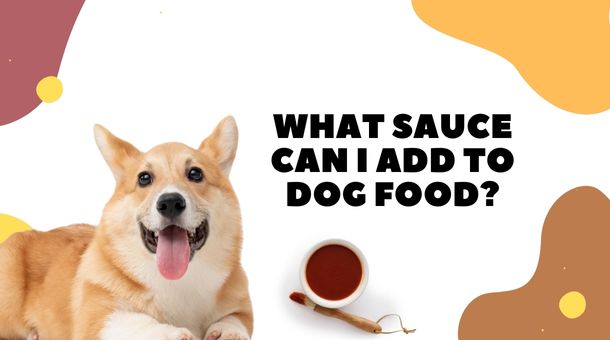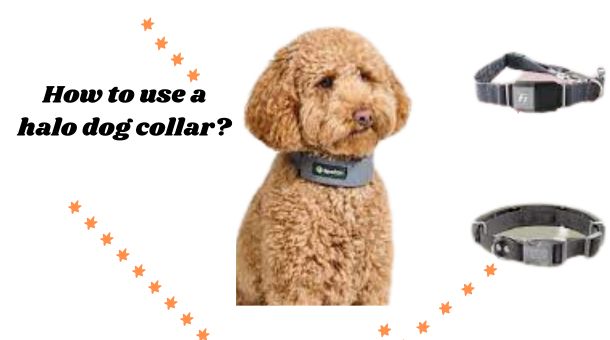As humans do canines, dogs are fond of delicious sauces to go with their dry food, such as kibble. A small amount of gravy, that is savory dressing and sweet fruit puree will transform a meal for them.
Like humans, breeds have distinct preferences about the kind of sauces they prefer to put in their food. Some dogs may be obsessed with an intense meaty sauce, but others prefer something lighter and more delicate.
The issue would be, what Sauce should be added to food for dogs that is safe to feed him, but also one he’ll love? Many human foods are suitable for dogs, but with a few exceptions and restrictions. In this regard, there are 7 suggestions of delicious sauces that you can tempt dogs with.
What Sauce can I Add to Dog Food?
1: Cottage Cheese Sauce
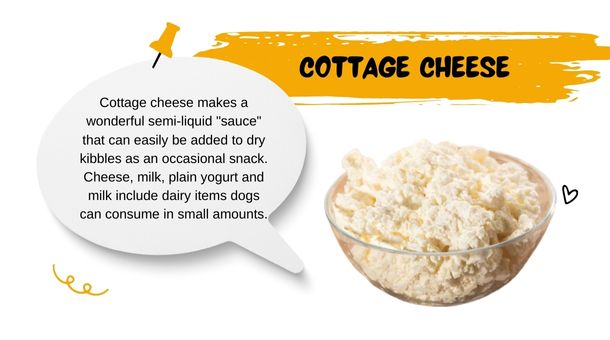
Cottage cheese makes a wonderful semi-liquid “sauce” that can easily be added to dry kibbles as an occasional snack. Cheese, milk, plain yogurt and milk include dairy items dogs can consume in small amounts.
A large amount of dairy consumption could cause digestive issues. However, this is because the levels of lactase in dogs, an enzyme that breaks down the sugars in milk, are not as high. Thus, lactose-intolerant dogs should not consume dairy products.
When you consume food that contains dairy, vomiting or diarrhea may be signs of lactose intolerance. So long as your dog isn’t lactose-intolerant, it’s appropriate to include some cottage cheese in his food now and then.
2: Canned Fish Sauce
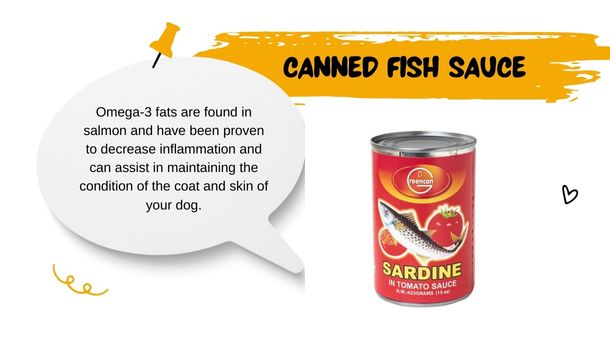
Omega-3 fats are found in salmon and have been proven to decrease inflammation and can assist in maintaining the condition of the coat and skin of your dog. In addition, the liquid in a bottle of salmon or tuna is delicious in taste and smell and makes a fast, easy, and delicious sauce to sprinkle over the dog’s food.
If you feed your dog fish, remember not togive the fish raw. It could contain a parasite that can cause salmon poisoning, a fatal illness. However, since the canned fish has been cooked, the liquid and the fish are safe and delicious options.
3: Pineapple Sauce

Canines can eat fresh pineapple and its juice in moderate amounts. In addition, it is an excellent healthy and nutritious food choice for your dog because it’s loaded with nutrients, minerals, vitamins, and fiber.
Like many other foods, over-consumption of consumption of pineapple in dogs could result in diarrhea and nausea. This is why offering your dog a small amount of water each time is a good idea.
4: Ripe Tomato Sauce

So long as they’re in good condition, you can offer your pet tomatoes as treats. Therefore, tomato juice or tomato sauce with no other ingredients is a fantastic option to add flavor and nutrients to your dog’s food.
However, green tomatoes might contain small amounts of the toxic glycoalkaloid tomatine. While they’re not poisonous in humans, they are believed to be poisonous to dogs.
Tomatine in tomatoes may cause nausea, irregular heartbeats, muscle weakness, and breathing issues in dogs. So instead, opt for a can of tomato juice without additional salt, or mix some fresh tomatoes to make an easy homemade sauce.
5: Low-Sodium Chicken Sauce
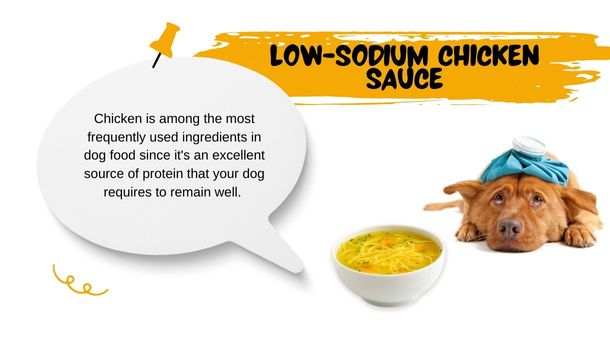
Chicken is among the most frequently used ingredients in dog food since it’s an excellent source of protein that your dog requires to remain well. This is why bone broth or chicken makes the perfect Sauce for the dog’s food.
Be sure to select the low-sodium broth for your chicken. Dogs who eat too much salt can suffer from salt poisoning, or dehydration can result in diarrhea, vomiting as well as and seizures vomiting. In extreme situations, excessive salt could be fatal.
6: Unsweetened Apple Sauce
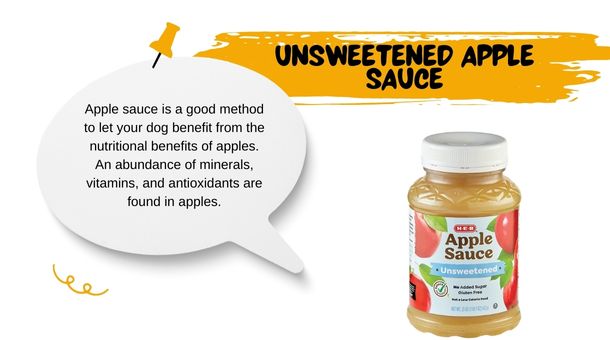
Apple sauce is a good method to let your dog benefit from the nutritional benefits of apples. An abundance of minerals, vitamins, and antioxidants are found in apples. Additionally, they have plenty of fiber, which could benefit the dog’s digestive system.
But, because the seeds of apples contain cyanide, a toxic ingredient in large quantities, you should never feed your pet apple seeds.
7: Coconut Sauce
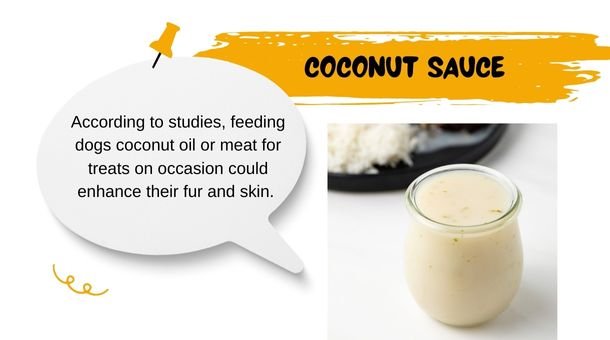
According to studies, feeding dogs coconut oil or meat for treats on occasion could enhance their fur and skin. However, it is essential to remember that dogs should eat something other than coconut oil in moderation as it’s high in fat and calories.
Based on the size of your dog according to his size, one-fourth teaspoon or one tablespoon daily is the ideal amount to feed your dog, as per Healthline. The process of melting the coconut oil in the microwave over a short time will warm it enough to be used as a sauce for your dog’s meals (not warm). In addition, it’ll nicely coat every bite of kibble, providing him an incentive to enjoy every bite.
Why Should We Add Sauce to Dog Food?
Sauces can make your dog’s meals more intriguing and let them try different flavors when eating their usual food. This can make it more appealing and can make them enjoy it more.
It is essential to eat a balanced diet to stay healthy, and sauces can provide a boost to meet their nutritional requirements. They will be able to satisfy these needs without any difficulty. Sauces can also moisten the pet’s food, softening it and helping it to be chewed more easily.
What foods can dogs eat?
Dogs can take in meat, veggies, grains, dairy, and even grains. Here’s a list of permitted foods that your dog can enjoy during mealtimes:
- Meat Turkey, chicken lamb, beef
- Vegetables: carrots, green beans, broccoli, spinach
- Grains: oats, rice, quinoa
- Dairy: yogurt, cottage cheese, cheese
- Sauces and wet food items such as eggs that are raw bones, vegetable oils, purees of vegetables, and milk
Here is a list of the foods you should not feed your pet:
- Alcohol
- Chocolate
- Coffee
- Grapes
- Onions
- Raisins
- Tomatoes
- Caffeine
- Salty food items
- Wheat
- Condiments
- Spicy food
Conclusion
Although dogs can consume some human-made foods and sauces, it is crucial to be aware that not all human food is suitable for dogs. Therefore, it is best to talk to an animal veterinarian before giving your dog new food or Sauce.
If you’re looking for simple ways to prepare gravy to add to your pet’s food, you can try our recipe for dog gravy! This recipe is simple enough to give your dog the necessary nutrients and help them have a great time eating its food.
FAQ:
What foods do dogs love the most?
Tests have revealed that most dogs are drawn to pork and beef over lamb and chicken. They also prefer moist, warm food over dry, cold food items. So naturally, like human beings, every dog has its individual preferences.
What vegetables Can dogs not eat?
Fruits like raisins and grapes. Our first choice is raisins and grapes.
- Avocados.
- Stones, seeds, and pips.
- Mushrooms.
- Nuts.
- Unripe tomatoes.
- The garlic and onion.
- Nutmeg.
Is Sweet Potato good for dogs?
Sweetpotatoes are the perfect source of fiber that helps your digestive tract function more efficiently. In addition, consuming fiber regularly can reduce the risk of developing heart disease and certain kinds of cancer.
What human food is best for dogs?
Fish is a good source of amino acids and fats, which give your dog a healthy boost. Sardines and salmon are both beneficial — salmon since it’s a great source of protein and vitamins, and sardines since they’re soft and digestible bones that provide calcium.
What human foods can dogs eat for a healthy diet?
- Chicken.
- Turkey.
- Pork.
- Lean beef.
- Sardines and fish are suitable for dogs.
- Eggs, as long as they’re cooked.
- Cheeses like hard cheeses and cheddar cheese in moderate amounts are healthy.
- Yogurt can be a good snack, but only in moderation.
What Sauce can I Add to Dog Food? What Sauce can I Add to Dog Food? What Sauce can I Add to Dog Food? What Sauce can I Add to Dog Food? What Sauce can I Add to Dog Food? What Sauce can I Add to Dog Food?
What Sauce can I Add to Dog Food? What Sauce can I Add to Dog Food? What Sauce can I Add to Dog Food? What Sauce can I Add to Dog Food? What Sauce can I Add to Dog Food? What Sauce can I Add to Dog Food?

